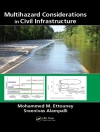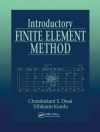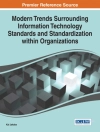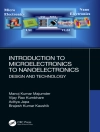Environmental remediation technologies to control or prevent pollution from hazardous waste material is a growing research area in academia and industry, and is a matter of utmost concern to public health, to improve ecology and to facilitate the redevelopment of a contaminated site. Recently, in situ and ex situ remediation technologies have been developed to rectify the contaminated sites, utilizing various tools and devices through physical, chemical, biological, electrical, and thermal processes to restrain, remove, extract, and immobilize mechanisms to minimize the contamination effects. This handbook brings altogether classical and emerging techniques for hazardous wastes, municipal solid wastes and contaminated water sites, combining chemical, biological and engineering control methods to provide a one-stop reference.
This handbook presents a comprehensive and thorough description of several remediation techniques for contaminated sites resulting from both natural processes and anthropogenic activities. Providing critical insights into a range of treatments from chemical oxidation, thermal treatment, air sparging, electrokinetic remediation, stabilization/solidification, permeable reactive barriers, thermal desorption and incineration, phytoremediation, biostimulation and bioaugmentation, bioventing and biosparging through ultrasound-assisted remediation methods, electrochemical remediation methods, and nanoremediation, this handbook provides the reader an inclusive and detailed overview and then discusses future research directions. Closing chapters on green sustainable remediation, economics, health and safety issues, and environmental regulations around site remediation will make this a must-have handbook for those working in the field.
Inhaltsverzeichnis
Innovation in Environmental Remediation Methods;
Hazardous Wastes – Types and Sources;
Thermal Treatment;
Soil Vapor Extraction: Fundamentals, Theory (Permeability and Gas–Non-aqueous Phase Liquid Mass Transfer Coefficient) and Applications;
Electrokinetic Remediation;
Stabilization/Solidification;
Permeable Reactive Barriers (PRBs) for Environmental Site Remediation;
Thermal Desorption and Incineration;
Green Technique for the Remediation of Soil Using Composting;
Phytoremediation;
Biostimulation and Bioaugmentation: Modern Strategies for the Successful Bioremediation of Contaminated Environments;
Strategies for Enhancing Soil Phytoremediation and Biomass Valorization;
Landfarming: A Green Remediation Technique;
Ultrasound-assisted Remediation Methods;
Electrochemical Methods for Environmental Remediation;
Nanoremediation;
Economic, Legal and Safety Issues of Environmental Site Remediation;
Future of Environmental Remediation Methods
Über den Autor
Chaudhery Mustansar Hussain, Ph D, is an adjunct professor and director of laboratories in the Department of Chemistry and Environmental Sciences at the New Jersey Institute of Technology (NJIT), Newark, New Jersey, United States. His research is focused on the applications of nanotechnology and advanced materials, environmental management, analytical chemistry, and other various industries. Dr. Hussain is the author of numerous papers in peer-reviewed journals as well as a prolific author and editor of many books, including scientific monographs and handbooks in his research areas.












